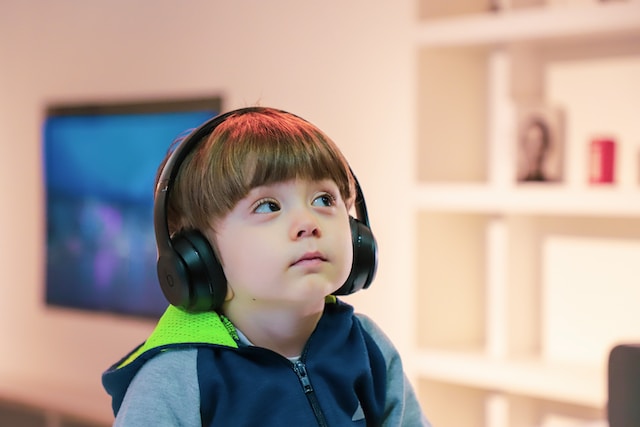Exploring the Basics of Autism Spectrum Disorder (ASD)
Autism Spectrum Disorder (ASD) is a complex neurodevelopmental condition that affects individuals in various ways. Understanding the basics of ASD is crucial for raising awareness and promoting inclusivity.
At its core, autism spectrum disorder refers to a range of conditions characterized by challenges in social interaction, communication difficulties, and repetitive behaviours. It is important to note that autism is a spectrum disorder, meaning it affects individuals differently and to varying degrees.

The diagnosis of ASD involves a comprehensive evaluation conducted by healthcare professionals specializing in developmental disorders. This evaluation takes into account behavioural observations, interviews with parents or caregivers, and standardized assessments.
By exploring the basics of autism spectrum disorder, we can foster empathy and understanding towards individuals on the spectrum. This knowledge can help create supportive environments that embrace neurodiversity and empower those with ASD to thrive.
The Different Types and Levels of Autism Spectrum Disorder
Autism Spectrum Disorder (ASD) encompasses a wide range of conditions, each with its own unique characteristics and challenges. Understanding the different types and levels of ASD is crucial in providing appropriate support and interventions for individuals on the spectrum.
High functioning autism, also known as Level 1 ASD, refers to individuals who have relatively mild symptoms and higher cognitive abilities. They may exhibit difficulties with social interactions, communication, and sensory sensitivities but are often able to function independently in daily life.
On the other end of the spectrum is low functioning autism, or Level 3 ASD. Individuals with this level of ASD typically experience severe impairments in communication, social interaction, and behavior. They may require significant support for daily activities and often have intellectual disabilities.
Asperger’s syndrome falls under the umbrella of high functioning autism. Individuals with Asperger’s tend to have average or above-average intelligence but struggle with social skills and may display repetitive patterns of behavior or intense interests in specific topics.
PDD-NOS (Pervasive Developmental Disorder-Not Otherwise Specified) is a term used when an individual does not meet all the criteria for a specific ASD diagnosis but still exhibits significant impairments in social interaction, communication, or repetitive behaviors.
It’s important to note that these labels are not meant to define individuals on the spectrum but rather provide a framework for understanding their strengths and challenges. Each person with ASD is unique, and their needs should be addressed on an individual basis through person-centred approaches that promote inclusion, acceptance, and support.
Common Signs and Symptoms of Autism Spectrum Disorder
Recognizing the signs and symptoms of Autism Spectrum Disorder (ASD) is crucial for early intervention and support. Understanding the common indicators can help parents, caregivers, and educators identify potential challenges that individuals with ASD may face.
One of the key signs of autism is social communication difficulties. Children with ASD may struggle with understanding and using nonverbal cues such as eye contact, facial expressions, and body language. They may also find it challenging to initiate or maintain conversations, often preferring solitary activities over social interactions.
Additionally, their behaviour patterns can manifest in repetitive behaviours or restricted interests. These behaviours can include repetitive movements like hand-flapping or rocking, insistence on routine and sameness, intense focus on specific topics or objects, and difficulty adapting to changes in their environment.
It’s important to note that every individual with ASD is unique, and symptoms can vary widely from person to person. However, recognizing these common signs can be a valuable starting point in seeking appropriate support and interventions for individuals on the autism spectrum.
The Causes and Risk Factors Associated with Autism Spectrum Disorder
Autism Spectrum Disorder (ASD) is a complex developmental disorder that affects individuals in various ways. While the exact causes of ASD are still being researched, it is widely accepted that both genetic factors and environmental influences play a role in its development.
Genetic factors are believed to be one of the key contributors to ASD. Research has shown that certain genes may increase the risk of developing autism, although no single gene has been identified as the sole cause. It is thought that a combination of multiple genes, along with other factors, contribute to the development of ASD.
In addition to genetic factors, environmental influences have also been implicated in the development of autism. These can include prenatal and early life exposures such as maternal infections during pregnancy, exposure to certain chemicals or toxins, and complications during birth. It is important to note that these environmental factors do not cause autism on their own but may interact with genetic vulnerabilities to increase the risk.
Understanding the causes and risk factors associated with ASD is crucial for both researchers and healthcare professionals. By identifying these factors, we can gain valuable insights into how autism develops and potentially develop strategies for early intervention and prevention.
It’s worth noting that every individual with autism is unique, and there can be significant variation in symptoms and severity. Ongoing research continues to shed light on this complex disorder, bringing us closer to a better understanding of its causes and potential interventions.
Evidence-Based Treatments and Interventions for Individuals with Autism Spectrum Disorder
Evidence-based treatments and interventions play a crucial role in supporting individuals with Autism Spectrum Disorder (ASD) in their development and daily lives. Among the various approaches, behavioral therapy stands out as an effective method for addressing the unique needs of individuals with ASD.
Behavioral therapy for ASD focuses on identifying and modifying behaviors that may hinder social interactions, communication skills, and adaptive functioning. It utilizes techniques such as Applied Behavior Analysis (ABA) to teach new skills, reduce challenging behaviors, and promote positive outcomes.
Another essential intervention is speech therapy, which aims to improve communication abilities in individuals with autism. Speech therapists work closely with individuals to enhance their language skills, including both verbal and non-verbal communication. Through structured sessions tailored to individual needs, speech therapy helps individuals with ASD develop functional communication skills and improve social interactions.
Occupational therapy interventions also play a vital role in supporting individuals with ASD. Occupational therapists address sensory processing difficulties, motor coordination challenges, self-care skills deficits, and other areas that impact daily functioning. By providing targeted interventions and strategies tailored to each individual’s unique needs, occupational therapy helps enhance independence and overall quality of life.
It is important to note that evidence-based treatments should be implemented by trained professionals who have expertise in working with individuals on the autism spectrum. Collaborative efforts between therapists, educators, caregivers, and the individual themselves are essential for ensuring comprehensive support throughout their journey.
By utilizing behavioral therapy techniques along with speech therapy interventions and occupational therapy strategies tailored to each individual’s needs, we can maximize the potential for positive outcomes for individuals with Autism Spectrum Disorder.
Living with Autism: Supporting Individuals with ASD and Their Families/Carers
In recent years, there has been a growing recognition of the importance of supporting individuals with Autism Spectrum Disorder (ASD) and their families/carers. The journey of living with autism can present unique challenges, but with the right support systems in place, individuals with ASD can thrive and lead fulfilling lives.
One crucial aspect of this support is the availability of autism support services. These services play a vital role in providing guidance, resources, and assistance to individuals with ASD and their families. From early intervention programs to specialized therapies and counseling services, these support systems cater to the unique needs of each individual on the autism spectrum.
Inclusion is another key component in creating a supportive environment for individuals with ASD. In schools, inclusive education practices ensure that students with ASD have equal access to education alongside their neurotypical peers. This not only promotes social integration but also fosters understanding and acceptance among students.
Similarly, workplaces are increasingly recognizing the value that individuals with ASD bring to the workforce. By implementing inclusive employment practices such as job accommodations and tailored support systems, employers can create an environment where individuals with ASD can excel in their chosen careers.
It is important for society as a whole to understand that supporting individuals with ASD goes beyond just raising awareness – it requires tangible actions that promote inclusion and provide necessary resources. By embracing inclusivity in schools and workplaces while ensuring access to autism support services, we can create a world where individuals on the autism spectrum are empowered to reach their full potential.
In conclusion: Promoting Understanding and Acceptance of Autism Spectrum Disorder in Society
In conclusion, promoting understanding and acceptance of Autism Spectrum Disorder (ASD) in society is crucial for creating an inclusive and supportive environment for individuals on the spectrum. By increasing awareness and education about ASD, we can break down stigmas and misconceptions surrounding this neurological condition.
It is essential to emphasize that individuals with ASD have unique strengths, talents, and perspectives that can greatly contribute to our society. By embracing neurodiversity, we can foster a more inclusive culture that values the diverse abilities of all individuals.
Efforts should be made to provide accessible resources, support services, and accommodations for individuals with ASD in various aspects of life such as education, employment, healthcare, and social interactions. This includes promoting sensory-friendly environments, implementing inclusive educational practices, advocating for equal opportunities in the workforce, and ensuring appropriate healthcare services are available.
Furthermore, community engagement plays a vital role in promoting understanding and acceptance of ASD. Encouraging open discussions about autism within families, schools, workplaces, and society at large helps to dispel myths and build empathy towards individuals on the spectrum.
In conclusion, by working together to promote understanding and acceptance of Autism Spectrum Disorder in society through education, support services, accommodations, and community engagement we can create a more inclusive world where everyone feels valued and accepted regardless of their neurological differences.



